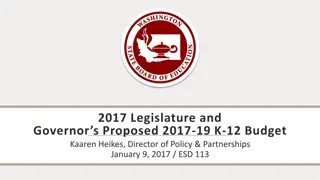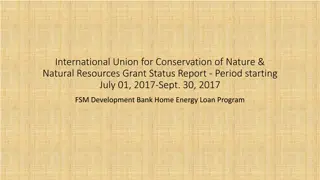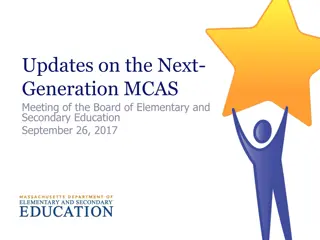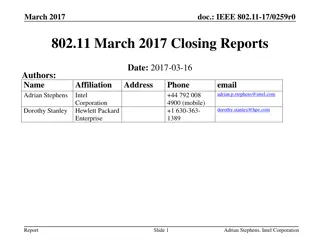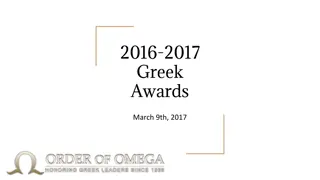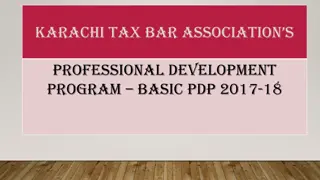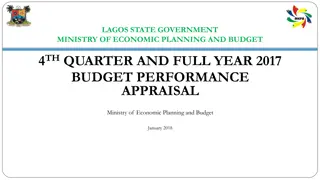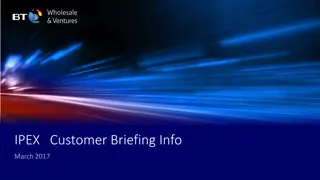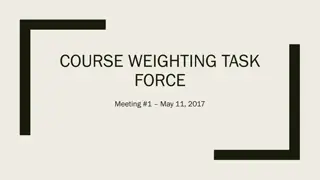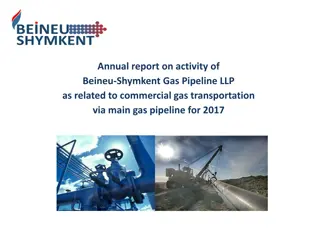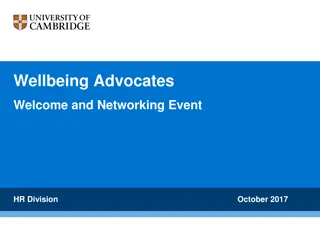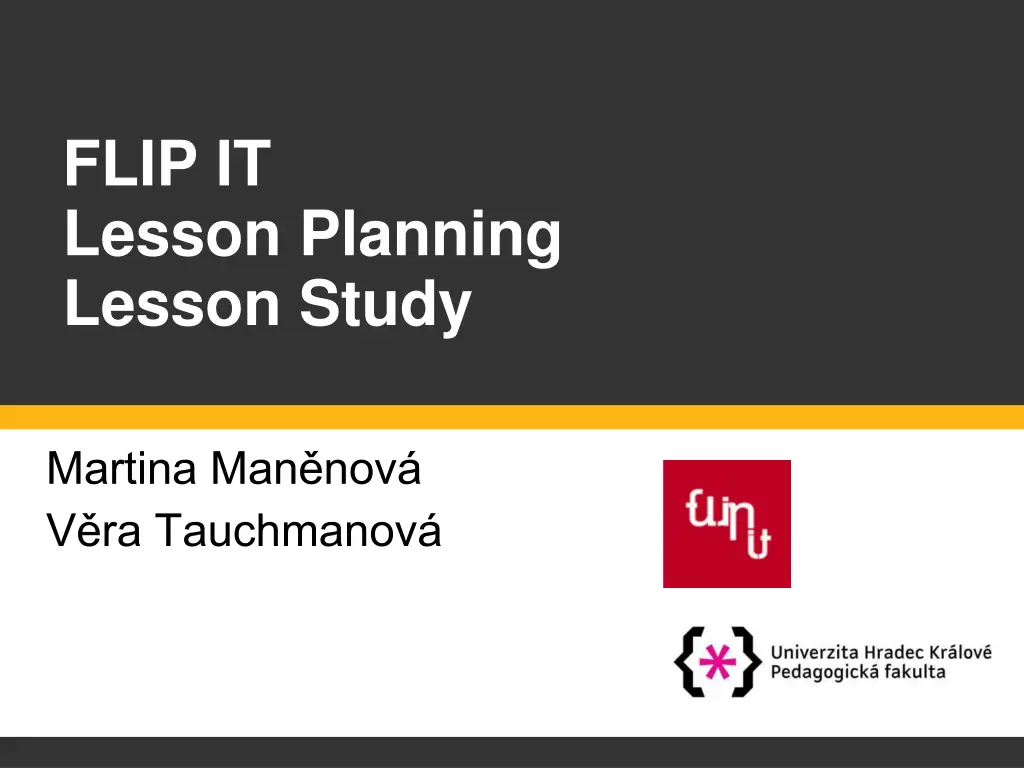
Effective Lesson Planning Strategies
Discover key components and steps for effective lesson planning, including identifying learning objectives, choosing instructional strategies, and ensuring material relevance. Learn how to engage students and achieve teaching goals successfully.
Download Presentation

Please find below an Image/Link to download the presentation.
The content on the website is provided AS IS for your information and personal use only. It may not be sold, licensed, or shared on other websites without obtaining consent from the author. If you encounter any issues during the download, it is possible that the publisher has removed the file from their server.
You are allowed to download the files provided on this website for personal or commercial use, subject to the condition that they are used lawfully. All files are the property of their respective owners.
The content on the website is provided AS IS for your information and personal use only. It may not be sold, licensed, or shared on other websites without obtaining consent from the author.
E N D
Presentation Transcript
FLIP IT Lesson Planning Lesson Study Martina Man nov V ra Tauchmanov
Lesson Planning Sources: Milkova, S. Strategies for Effective Lesson Planning Vondrov et al. Lesson study v esk ch podm nk ch Singapore Management University: Lesson Planning www.crlt.umich.edu: Improving your teaching
Lesson Planning Key components: Objectives of the students learning Teaching / learning activities Strategies to check the students understanding Every lesson plan achievement of the objective, connection to long-term instructional goals
Lesson Planning 1. Identify the learning objectives a) What is the topic of the lesson? What do I want the students to learn? What do I want them to understand and be able to do at the end of class? What do I want them to get out of this particular lesson? The students should understand WHY they are taught the lesson and WHAT they can expect to get out of it.
Lesson Planning 1. Identify the learning objectives further considerations to be made by teachers What are the most important concepts/ideas/skills I want students to be able to grasp and apply? Why are they important? If I ran out of time, which ones could not be omitted? Which ones could I skip if pressed for time?
Lesson Planning step 1 in FC & Instructional Strategies Is the material effective and relevant? Do the students have access to the material? Do the students know how to use the material? Describe what students will need to be able to know and do using active verbs from Bloom s revised taxonomy (http://www.celt.iastate.edu/teaching/effective- teaching-practices/revised-blooms-taxonomy
Lesson Planning step 1 in FC & Instructional Strategies Choose the evidence based instructional approach which fits the main learning activity Start small! Don t try to make perfect videos! Present what the students struggle with!
Lesson Planning 2. Plan the specific learning activities What will I do to explain the topic? What will I do to illustrate the topic in a different way? How can I engage students in the topic?
Lesson Planning 2. Plan the specific learning activities cont Are there relevant real-life examples, analogies, or situations that can help students understand the topic? What will students need to do to understand the topic better?
Lesson Planning Step 2 for FC 2. Plan the specific learning activities The pre-class work should set the scene for the in- class activity. Plan how you will communicate the new instructional ideas. Would students benefit more from watching a video demonstration outside of class at their own pace and as often as needed or would some other media type be more effective?
Lesson Planning Step 2 for FC 2. Plan the specific learning motivating activities (to prepare before class) What kinds of activities will motivate students and prepare them for class? What should students be able to do to prepare for class? What questions will the students be asked? Identify the kinds of incentives or motivations that will engage students in the instructional material and prepare them for the in-class activity. Determine how you can provide feedback to students about what they know and do not know prior to class.
Lesson Planning Step 2 for FC 2. Plan in-class activities that provide students opportunities to deepen understanding What kind of in-class activities will focus students to attain higher-level cognitive abilities? Align & match these activities with the learning objectives. In all these examples prepare clear instructions for distribution to students in-class. Use a timeline work plan to help you keep manage the activity and keep students on task. .
Lesson Planning Step 2 for FC 2. Plan post-class activities that extend student learning How will students continue the learning experience from the inside class activity to outside of class? (We do not retain well what we may learn from just one exposure to the materials.) Describe how you will connect this lesson to the next lesson so that they flow coherently. What kind of in-class activities will focus students to attain higher-level cognitive abilities? .
Lesson Planning Step 2 for FC 2. Plan post-class activities that extend student learning Prepare clear instructions for distribution to students in-class. Use a timeline work plan to help you keep manage the activity and keep students on task.
Lesson Planning 3. Plan to assess student understanding The number and type of assessment Examples of different assessments Formative and/or summative The criteria and standards Rubrics Students roles Self-assessment Peer assessment
Lesson Planning 3. Plan to assess student understanding cont. Considerations about individual assessment tasks and methods through which individual assessments will be combined into the final grade for course The provision of feedback
Lesson Planning 4. How to sequence the lesson in an engaging and meaningful manner (SMU, 2017)
Lesson Planning 5. Create a realistic timeline for all the phases - Be flexible! Estimate how much time each of the activities will take Plan a few minutes at the end any remaining questions, a summary of the key points Plan an extra activity or a question for discussion
Lesson Planning 6. Plan for the closing-up of the lesson For teachers: Check the students understanding, give subsequent instructions Emphasise and summarise key information Tie up loose ends Prewiew upcoming topics
Lesson Planning 6. Plan for the closing-up of the lesson For students: Demonstrating of their understanding of the major points Consolidation of the key information Leaps and bounds of the lesson ideas Transferring ideas to new situations
Lesson Study What is it? Learning from other colleagues and supporting the staff through triads. Putting the power back into the classroom: teaching and learning. It is a model of collaborative CPD (continuing professional development) where a group of you plan a lesson together, observe each other and reflect on learners progress.
Lesson Study What is it? A way of empowering staff to develop and reflect on their own teaching in the classroom.






